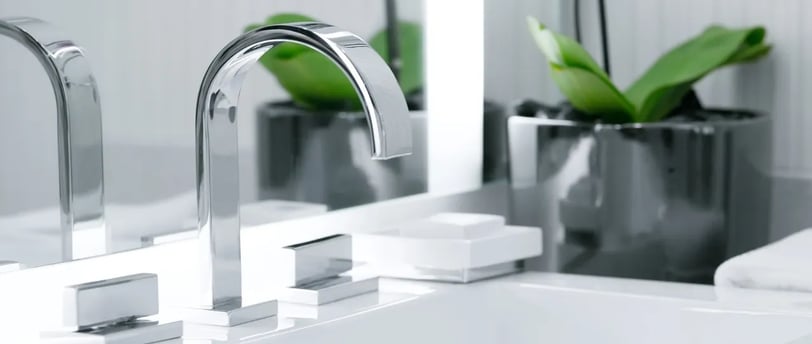What are the most efficient faucets for your home
11/6/20233 min read


Every year, the average American family uses about 80 gallons of water per person. That's a lot of water! If you're looking for ways to reduce your family's consumption and save money on your utility bills, installing efficient faucets is one easy way to do it.
Efficient faucets have a high flow rate--meaning they use less water than standard faucets. They also tend to be more durable because they don't have moving parts or springs that can break down over time (which means fewer repair calls).
Types of Efficient Faucets
There are two main types of faucets: low-flow and touchless.
Low-flow models use less water, which means you'll have to refill your sink less often. These faucets tend to be slower than normal ones, but they're great for people with small sinks or kids who need help washing their hands.
Touchless models use sensors to detect when someone is near them before turning on the water; this prevents splashing and wasted water from turning on accidentally while you're not using it.
Low-Flow Faucets
With the rising cost of water, it's important to use less. Low-flow faucets are a great way to do this. They use less than 2 gallons per minute (GPM), which means you can save money on your monthly utility bills and help the environment at the same time!
Motion-Sensor Faucets
Motion-sensor faucets are a relatively new innovation that can make your life easier. These faucets automatically turn on when you approach them, and shut off when you leave. They're easy to use: just wave your hand over the sensor and enjoy!
The motion-sensor feature is great for those who have trouble reaching down into their sink or tub to turn on the water flow. It's also useful for people who like to multitask while they wash their hands--you can keep one hand in the sink while using another hand to hold onto a towel or washcloth, which makes things much easier than having both hands free but unable to reach out far enough from under running water (and potentially getting them wet).
Touchless Faucets
Touchless faucets are the most convenient and efficient way to wash your hands. They use sensors to detect when you turn on the water, so there's no need for manual controls or buttons. However, they're also expensive and require an electrician to install them properly. If you have an older home with old plumbing systems, this might not be feasible for you--but if not, touchless faucets are definitely worth considering!
Dual-Flush Faucets
Dual-flush faucets are the most efficient option for any home. They come with two buttons: one for a smaller amount of water, and one for a larger amount of water. You can choose how much water you want to use depending on what you're doing in the bathroom or kitchen.
Tips for Choosing an Efficient Faucet
When you're shopping for a faucet, there are a few things to keep in mind. First, consider your needs and what kind of water usage you have at home. If you have young children who run the faucets all day long, then maybe it's time for something more efficient like an aerator or low-flow option.
If you're looking for something that will help save money on your water bill over time, look for certifications from organizations like EPA WaterSense or Energy Star--these products have been tested by independent agencies and proven to save energy while still providing quality performance.
Installation
If you're not a professional, the DIY route is probably the best option. It's easy to install a faucet and it doesn't require much more than basic plumbing knowledge. If you have no experience with plumbing or electrical work, however, it's best to hire a professional plumber who can do the job right for you.
Maintenance
Maintenance is an important part of keeping your faucet running efficiently. You should be cleaning and checking for leaks on a regular, as well as replacing parts that have worn out or broken down.
Conclusion
When it comes to faucets, efficiency matters. The EPA has set standards for water usage in the home and encourages consumers to use faucets that meet those standards. If you're looking for a new faucet, look for one with an Energy Star rating on it--this means that the product has been tested by third-party organizations and meets certain energy efficiency criteria.
